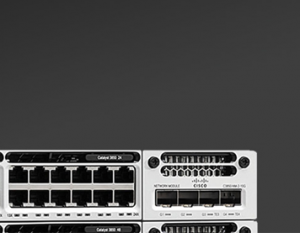Switch network or network switch is a device that plays the main role of interconnecting devices together to a computer network. The network switch will rely on packet switching to process, forward and receive data to a particular device. Network switches are also referred to the as bridging hub, switching hub or MAC bridge. Network switch will only forward date to the device that needs to receive it, which is different from the traditional network hubs. In simple terms, the network switch is a simple device that has been designed to centralize communication among numerous connected devices within a particular LAN (local area network). Most people will confuse a network router and a network switch since they have a similar design and share some function. However each has its ow unique function within a particular network.
Cisco Network Switch
Cisco is a leading firm in networking, and other tech products and services offer an ideal approach when it comes to network switches. To be able to understand the basics of Cisco networking is vital that one can understand what a network switch is. Many enterprises utilize switches to connect their printers, computers, and servers within a particular building or campus. The switch within a particular network will serve as a controller, allowing the devices connected to communicate with each other effectively. Through the use of network switches enterprises can be able to save money and also boost productivity.
- Unmanaged switches – this is a switch that is simple and is not meant to be configured. Thus there is not much when it comes to installation and setting it up. Unmanaged switches done have much network capacity compared to managed switches.
- Managed switches – This type of switch is configurable and offer much more capacity and flexibility when compared to an unmanaged They can be monitored and managed locally or remotely.
Network switches act as ideal building blocks to any business, especially when it comes to communication, including data, voice, video and wireless communications.
Specification of Network Switches
There are numerous type and function of switches out there. We are going to look at a few important once to enable you to comprehend network switch fully.
- POE (Power over Ethernet) Switch – This is a terminology used in IT to describe network cables that have the capacity to carry electrical power from one point to another. A good example is a digital security camera. The camera will require both a network connection and power connection to function effectively. This means with the use of a POE switch, one the network connection will only need to be made. The cable will provide networking capabilities and provide electrical power. Power over Ethernet brings various advantages include safety, reliability, scalability and flexibility. POE has numerous applications. Some of the common areas where POE is used include VoIP, IP cameras and Wireless devices such as Wi-Fi and Bluetooth APs and RFID readers. This is an effective form of networking that also saves resources.
When it comes to internetworking, Cisco offers a hierarchical model which is referred to as a hierarchical internetworking model. The model provided by Cisco enable a simple setup of a scalable, reliable and cost-effective internetworking model. The model mainly focuses on three functional areas or layers of the network.
Core Layer – This one that is responsible reliable and fast transportation of data across a particular network. This is usually known as the backbone of the network. Its main role is to reduce latency time in delivery of packets. Aspects that need to be factored when designing this layer includes high date transfer rate, low latency period and high reliability. There is numerous devices ideal for the core layer, including Cisco equipment. A few example includes Cisco switches and Catalyst switches.
Distribution Layer – The distribution layer in internetworking has the purpose of routing. The distribution layer is also responsible for policy-based network connectivity. Some of the roles include packet filtering, QoS, access later aggregation point, control broadcast and multicast and application gateways. The distribution layer is also responsible for queuing and providing packet manipulation within the network traffic.
Access layer – This layer entails devices that allow users and workgroups to use the services that are provided by the core and distribution layers. In the access layers, there is the capability to contract or expand domains using a hub, standard switch or repeater.
Applications
LAN Switches – Switches play a vital role in any networks since they can speed things up. There numerous types of switches. Switches that play the role of separating connection for each node in a company’s internal network is known as a LAN switch. LAN switches can provide series of networks that two devices are communicating with each other at a particular moment.
Fiber Optic and UTP Switches – In various network connection, the hubs and switches are usually equipped for other cable types, for example coaxial. Switches that can accommodate numerous media types such as UTP and fiber-optic cable are known as hybrid switches. They also create very fast network structure where switch-to-system communication can occur.
Advantages of Network Switches
There are numerous advantages of switch networks. Some of the most common types of advantages include the following:
- Switches make the network more secure since it can make any port directly communicate with another particular port.
- A switch will not broadcast all request to all the ports. Each switch has its ARP table which enables to prevent creating queries repeatedly.
- Advanced switches within a network can be used to create and manage VLANs, access lists and much more.
- Switches can be used directly to connect to workstations.
- Switches can reduce the workload on a particular network.
- Switches will enhance the performance of a particular network.
- Networks that include switches experience fewer frame collisions because switches create collision domains for each connection (a process called micro-segmentation).
These are some of the common merits of network switches. Network switches are ideal for both large scale and small scale enterprises. They boost performance and enhance network security.


